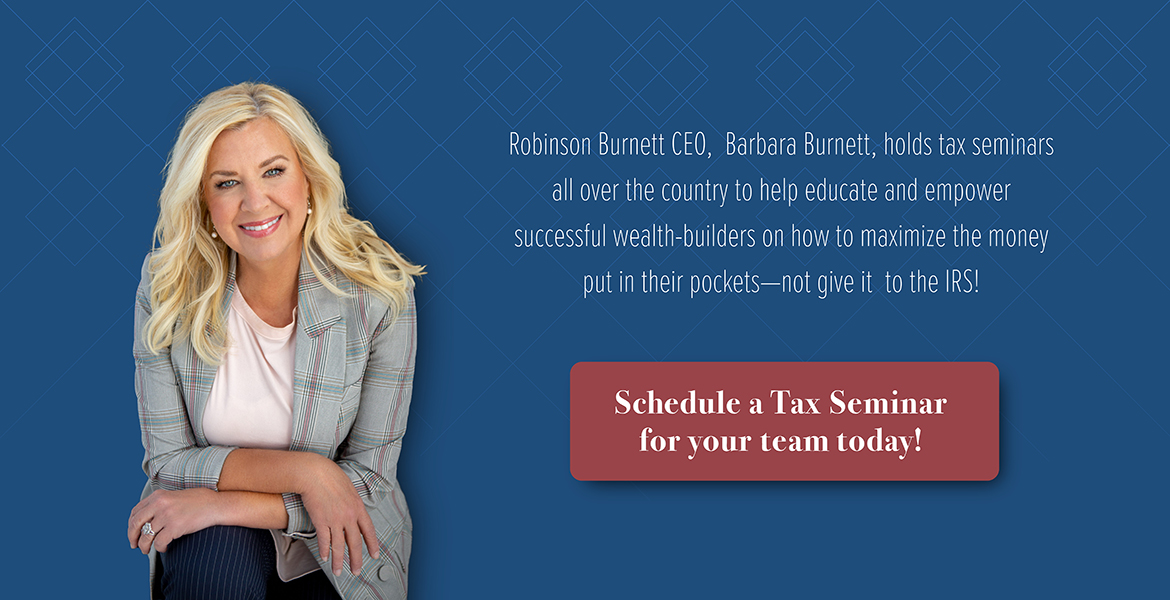If You Ignore Estimated Tax Payments You’ll Owe the IRS
If You Ignore Estimated Tax Payments You’ll Owe the IRS-Look at the Letter in your Portal at www.Robinsonburnett.com
 (Please note that your Estimated Tax Payment recommendations are included with your tax return documents that were uploaded to your portal in the current year.)
(Please note that your Estimated Tax Payment recommendations are included with your tax return documents that were uploaded to your portal in the current year.)
Hi Clients and fellow taxpayers,
Without a doubt the question “Why Did I Receive a Tax Notice When I Already Paid My Taxes?”
is addressed to us the most. The reason is if you have an S Corporation, an LLC, sole proprietor who reports on a Schedule C or a Landlord with Rental Property, you need to mail in additional taxes, aside from your W2, each quarter. That’s right. Every three (3) months you need to mail the IRS Tax Payments to cover your income from those sources.
But Why?? The reason is because you don’t have any other way to have the IRS withdraw taxes. Sure you can have Federal and State Income Taxes withheld on your W2, but those don’t cover other income. For this reason, we prepare the vouchers for you, give you the instructions about how much to send in, and where to mail them (now you can use https://www.irs.gov/payments/direct-pay, which I highly suggest, but you have to have information from your tax return in front of you.) Clients sometimes think that it is our fault that they receive penalties. The letter, the instructions, and the vouchers give you ample of information to avoid the penalties. This applies to both IRS payments and State estimated payments. Please, please start paying attention to that letter. We enclose one every single year but without fail, the question “Why Did I Receive a Tax Notice When I Already Paid My Taxes” comes to us.
The IRS has seen an increasing number of taxpayers subject to estimated tax penalties, which apply when someone underpays their taxes. The number of people who paid this penalty jumped from 7.2 million in 2010 to 10 million in 2015, an increase of nearly 40 percent. The penalty amount varies, but can be several hundred dollars.
The IRS urges taxpayers to check into their options to avoid these penalties. Adjusting withholding on their paychecks or the amount of their estimated tax payments can help prevent penalties. This is especially important for people in the sharing economy, those with more than one job and those with major changes in their life, like a recent marriage or a new child.
There are some simple tips to help taxpayers.
Having enough tax withheld or making quarterly estimated tax payments during the year can help you avoid problems at tax time.
Taxes are pay-as-you-go. This means that you need to pay most of your tax during the year, as you receive income, rather than paying at the end of the year.
There are two ways to pay tax:
- Withholding from your pay, your pension or certain government payments, such as Social Security.
- Making quarterly estimated tax payments during the year.
This will help you avoid a surprise tax bill when you file your return. You can also avoid interest or the Estimated Tax Penalty for paying too little tax during the year. Ordinarily, you can avoid this penalty by paying at least 90 percent of your tax during the year.
Why you should change your withholding or make estimated tax payments
If you want to avoid a large tax bill, you may need to change your withholding. Changes in your life, such as marriage, divorce, working a second job, running a side business or receiving any other income without withholding can affect the amount of tax you owe. And if you work as an employee, you don’t have to make estimated tax payments if you have more tax withheld from your paycheck. This may be a convenient option if you also have a side job or a part-time business.
Some income is not subject to withholding. This includes some income from self-employment, the sharing economy or some rental activities. Be sure to make estimated tax payments on those sources of income throughout the year. You may also make estimated tax payments if the withholding from your salary, pension or other income doesn’t cover your income tax for the year.
You make your estimated payments based on the income you expect to earn and any credits you expect to receive in the year. You can use your prior year tax return as a guide and Form 1040-ES, Estimated Tax for Individuals has a worksheet to help you figure your estimated payments.
You can use estimated tax payments to pay both income tax and self-employment tax (Social Security and Medicare).
When to and how to change your withholding or pay estimated taxes
Check your withholding often and adjust it when your situation changes. To do this fill out a new Form W-4 and give it to your employer. The Withholding Calculator is a helpful tool.
Estimated tax payments are due as follows:
- January 1 to March 31 – April 15
- April 1 to May 31 – June 15
- June 1 to August 31 – September 15
- September 1 to December 31 – January 15 of the following year
Note: If these due dates fall on a Saturday, Sunday or legal holiday, the payments are due the next business day.
You may send estimated tax payments with Form 1040-ES, Better yet; you can pay online, by phone or from your mobile device using the IRS2Go app. Visit IRS.gov/payments to view all the options.


